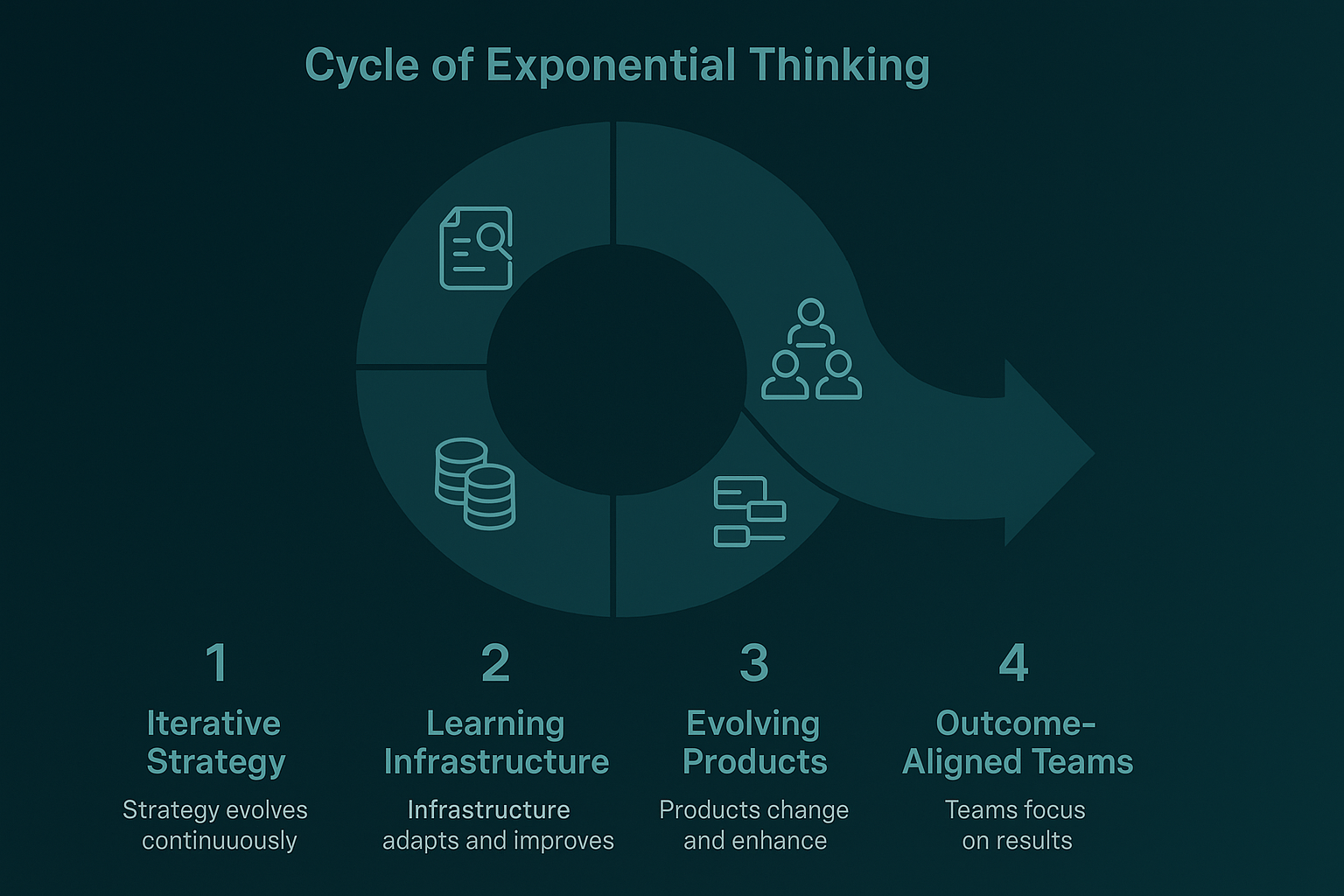Join our newsletter



When acceleration becomes constant, strategy stops being about optimization and starts being about transformation.
We operate in markets that shift in real-time. Technologies mature in quarters, not years. Customer expectations adapt faster than most roadmaps can follow. At this level of velocity, linear thinking is no longer slow; it’s obsolete.
That’s why exponential thinking isn’t a trend, a method, or a framework. It’s infrastructure.
Scaling something that works used to be a reliable strategy. But what if what “works” is already behind the curve?
Incremental progress assumes that the world around us is stable enough to forecast. It isn’t. In highly dynamic environments like AI, product design, or platform architecture, linear logic breaks down. The feedback loop between cause and consequence is too fast, too fluid.
Exponential thinking starts from a different place. It’s not about doing more of the same, more efficiently. It’s about building systems that grow, evolve, and adapt by design.
Most strategic plans assume that progress is predictable. Those assumptions hold for a few years—that a fixed set of tools, rules, and KPIs will guide the execution.
But when we observe how companies scale in the AI age, we see a different logic. They prototype fast, pivot early, and treat adaptability as an asset, not a cost. Their strategy isn’t a document; it’s a living system. And that system is built around a core idea: change is continuous, so our architecture has to be generative.
In this environment, the ability to course-correct in real time is more valuable than the ability to forecast accurately. Decisions get made closer to the edge. Outcomes emerge from interaction, not control. Roadmaps can’t just track deliverables; they need to allow for emergence.
Too often, AI is treated as a tool to speed up tasks or enhance performance. But at scale, its real power lies elsewhere: in how it redefines business logic. AI makes it possible to shift from workflows to orchestration, from dashboards to predictive environments, from reporting to sensing.
In this context, AI stops being a support function and becomes a layer of infrastructure driving decision loops, triggering actions, and adapting systems in motion. It’s what enables exponential thinking to become operational reality.
The companies that already treat AI this way are not just moving faster; they’re building capabilities that compound. And that compounding unlocks momentum you can’t replicate with manual control or linear systems.
One of the hardest things to design for is the unknown. Yet, that’s exactly what exponential thinking demands. If everything is changing—technology, user behavior, and regulatory models—then the systems we build need to do more than scale. They need to adapt.
They need to be modular, loosely coupled, and resilient by design. This applies not just to codebases, but to how we set priorities, deploy teams, manage data, and make decisions. It’s a full-stack shift from culture to architecture.
Teams that internalize this logic stop asking, “How do we get bigger?” They start asking, “What do we need to become next?” We’ve worked with leaders who are already there. They don’t view uncertainty as a threat; they treat it as input. They design with enough slack to allow emergence, and with enough clarity to avoid chaos.

This is what we see in projects where AI, strategy, and product intersect from day zero. We’ve helped organizations stop thinking in phases and start thinking in loops. We’ve seen cross-functional squads that operate like learning systems, shortening the gap between signal and response. And we’ve built platforms that generate their hypotheses over time, driving a new kind of product intelligence.
Exponential thinking isn’t about forecasting. It’s about designing systems that remain relevant while everything else changes. This is only the beginning.
What we’ve explored here is mindset. But mindset alone doesn’t scale. In our next article, we’ll explore how to translate exponential thinking into actual design:
Because vision is essential, but execution is exponential.
→ Follow us on LinkedIn
We share weekly insights on AI, product, and strategy for companies operating at the edge of what’s next.